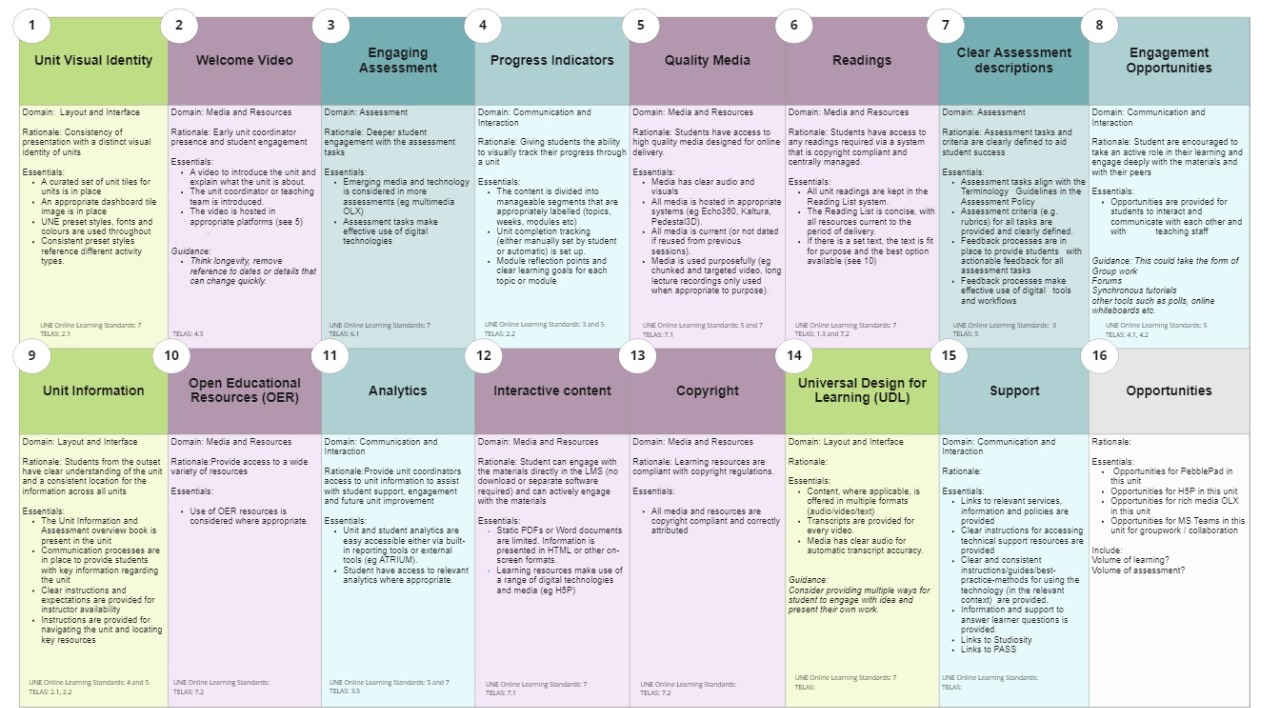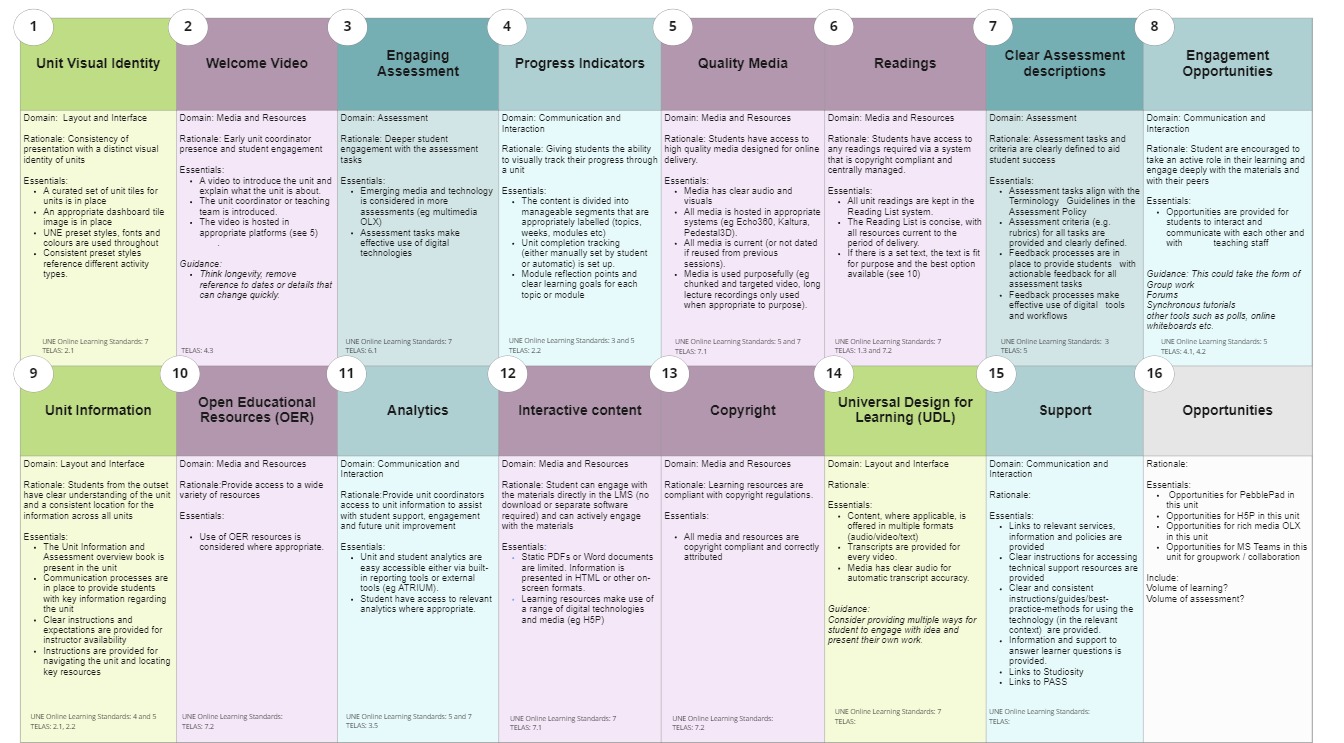

This element focuses on ways that students are able to track their progress through a unit, with particular attention to easy visual formats. The way in which information is organised, clarity of connection of learning tasks and unit/topic learning outcomes as well as direct feedback all act as progress indicators.
This element highlights the importance and opportunity for learners to be able to check their progress through a unit in ways other than assessment grades.
This element aligns with student agency, self-efficacy, motivation and autonomy. The opportunity to understand how one is progressing through a unit provides opportunities to better organise learning, plan and time management. Progress indicators can help students move past being strategic learning, to engage in self-assessment practices and deeper learning.
In the UNE digital environment progress indicators can be ones that are automated within the system or can be actioned by the student. Effective progress indicators are timely, relevant, fit for purpose and provide a means for action including clear indication of what that action needs to be. Progress indicators may consist of easy to mark checklists, learning checks within modules/topics or could include deeper points for reflection from the student.
…students aren’t encouraged to assess their own learning. Instead, they’re taught to memorise a unit here and a unit there, each one discrete and self-contained, then wait for a grade from some higher authority. That grade is meant to reflect how much a learner knows about a subject, and as soon as it’s administered, however accurately, it stands as a permanent label of progress, not to mention potential. (Briggs, 2016, para4)
Progress indicators can also be used to help a student gain an overall sense as to their learning journey outside of separate units. Being able to track the smaller steps to an larger goal in the future can help students maintain motivation and persistence (Ferrão & Almeida, 2021).
This element relates to the following research and practice informed guidelines/ frameworks:
TELAS Guidelines
UNE Learning Standards
Some things you can do include:
Tips for Element 9: progress Indicators Digital Education @ UNE Blog
Teaching Online @ UNE contains information on setting up activity completion and access restriction settings.
Ask a Learning Designer or Education Support Officer for advice and guidance learningdesign@une.edu.au
You could even contact the Student Support Services for insights and guidance.
Briggs, S. (2016). How to assess your own learning. InformED. https://www.opencolleges.edu.au/informed/learning-strategies/how-to-assess-your-own-learning/
Tai, J., Boud, D., Ajjawi, R., Bearman, M. & Dawson, P. (2019). CRADLE Suggests… Developing evaluative judgement. Centre for Research in Assessment and Digital Learning, Deakin University, Melbourne, Australia. doi:10.6084/m9.figshare.12585494 https://www.deakin.edu.au/__data/assets/pdf_file/0003/1911567/06-cradle_developing_evaluative_judgement_v2.pdf
Ferrão, M. E., & Almeida, L. S. (2021). Persistence and Academic Expectations in Higher-Education Students. Psicothema, 33(4), 587–594. https://doi.org/10.7334/psicothema2020.68
Meyer, J., & Land, R. (2003). Threshold concepts and troublesome knowledge: Linkages to ways of thinking and practicing. In C. Rust (Ed.), Improving student learning-ten years on. Oxford, England: OCSLD.
TELAS Framework https://www.telas.edu.au/framework/
UNE Online Learning Standards: https://myune.sharepoint.com/sites/academic-transformation/SitePages/Principals-for-Designing-Learning-Experiences-Online.aspx
Domain: Communication and Interaction
Rationale: Giving students the ability to visually track their progress through a unit
Essentials:
Standards: